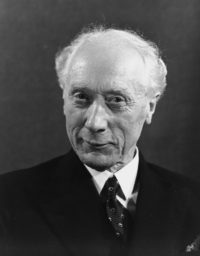“The Alexander Technique is the foundation upon which we do our work. Benefits to be gained include release of restrictions, increased coordination, effortless movement, fuller capacity of breath, improvement in the use of voice and speech, increased tone in the musculature, a stronger sense of presence, and the ability to transform into character.
Jean-Louis RODRIGUE & Kristof KONRAD


F.M. Alexander, Founder of the Alexander Technique
Frederick Matthias (F.M.) Alexander was an Australian actor and Shakespearean reciter. He developed the Alexander Technique around 1900 while exploring a solution to periodic loss of voice. Given that medical treatments gave only temporary relief, Alexander suspected that his affliction might be the result of something he was doing with his vocal mechanism. He began using a mirror to observe himself while he spoke. He discovered that what he was doing wrong did not stop (or start) with his vocal mechanism. Rather, his affliction involved a pattern of malfunctioning that he carried out throughout his entire body. He also realized that what he felt he was doing was quite different from what he actually observed in the mirror. His customary use of his body felt natural and “right” even though it caused him problems while new, improved habits felt strange, at first.
In the painstaking course of solving his problems, Alexander developed a new approach to physical education and health, an approach that has enabled thousands of men, women, and children to use their bodies with ease, grace, flexibility, and freedom from strain. Alexander established a school in London over 100 years ago, and since then the Alexander Technique has spread throughout the world.

Through the Alexander Technique, you learn to observe and correct your own habits of misuse. It is a system of neuromuscular re-education that allows you to sit, stand, and move without excess muscle tension. With a guiding touch and verbal instruction, Jean-Louis and Kristof analyze your imbalances and reinforce your innate postural reflexes. Ultimately, you learn to harness your innate kinesthetic intelligence, reduce your stress level, and clear the way — in complex skills or simple daily activities — to realize your full potential.

Applications of the Alexander Technique
The Alexander Technique is of special interest to those who must use their bodies with maximum ease and effectiveness (actors, musicians, dancers, athletes, etc.), but absolutely anyone can benefit from it. Once you begin studying and practicing the Alexander Technique, you quickly discover that there is no area of your life to which the principles cannot be applied.









